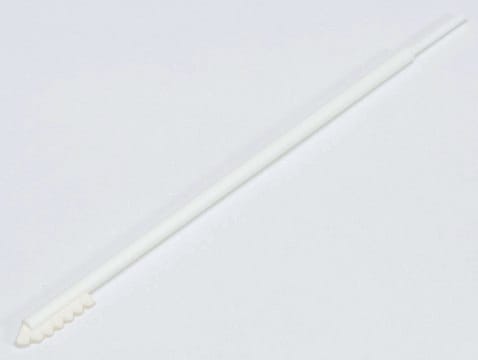WHA10300009
Whatman® quantitative filter papers, ashless, Grade 589/1 black ribbon
circles, diam. 90 mm, pack of 100
Sinónimos:
Whatman filter, Whatman paper, Z695297, paper filter
About This Item
Productos recomendados
material
cellulose filters
circles
packaging
pack of 100
manufacturer/tradename
Whatman 10300009
Whatman Article No. 28414097 (US reference)
parameter
25 sec/100 mL speed (Herzberg)
diam.
90 mm
thickness
190 μm
ash
≤0.01%
pore size
12-25 μm (Particle retention)
basis weight
80 g/m2
¿Está buscando productos similares? Visita Guía de comparación de productos
General description
Ashless: 0.007% ash maximum for Grades 40 to 44 and a maximum of 0.01% for the 589 Grades-very pure filters suitable for a wide range of critical analytical filtration procedures.
Hardened low ash: 0.015% ash maximum-treated with a strong acid to remove trace metals and produce high wet strength and chemical resistance. These filters are particularly suitable for Büchner filtration where the tough smooth surface of the filter makes it easy to recover precipitates.
Hardened ashless: 0.006% ash maximum-acid hardened to give high wet strength and chemical resistance with extremely low ash content. The tough surface makes these filters suitable for a wide range of critical filtration procedures.
Grade 589/1: 12-25 μm (fast filter paper)
‘Black Ribbon Filter′, the established standard in quantitative analysis for the filtration of coarse precipitates (class 2a acc. to DIN 53 135). Ashless filter paper with very high flow rate. Used for many quantitative standard methods, especially for gravimetric applications (e.g., determination of the ash content in foodstuffs), or for the Blaine test in the cement industry.
Features and Benefits
- Herzberg filtration speed of 50 s*
- Black ribbon filter′ for Fast filtration of coarse precipitates
- High purity (< 0.01% ash)
- Blaine test and ash content test compatible
- Also available prepleated as Grade 589/1 ½
Other Notes
Legal Information
Certificados de análisis (COA)
Busque Certificados de análisis (COA) introduciendo el número de lote del producto. Los números de lote se encuentran en la etiqueta del producto después de las palabras «Lot» o «Batch»
¿Ya tiene este producto?
Encuentre la documentación para los productos que ha comprado recientemente en la Biblioteca de documentos.
Los clientes también vieron
Nuestro equipo de científicos tiene experiencia en todas las áreas de investigación: Ciencias de la vida, Ciencia de los materiales, Síntesis química, Cromatografía, Analítica y muchas otras.
Póngase en contacto con el Servicio técnico







